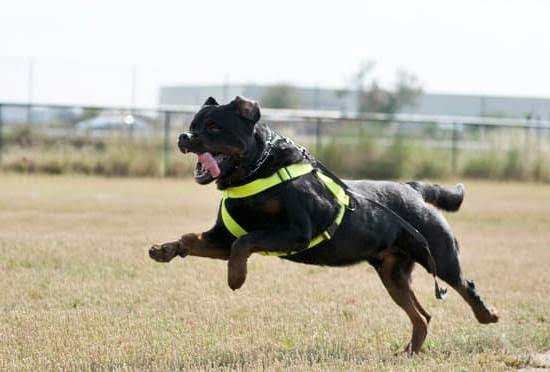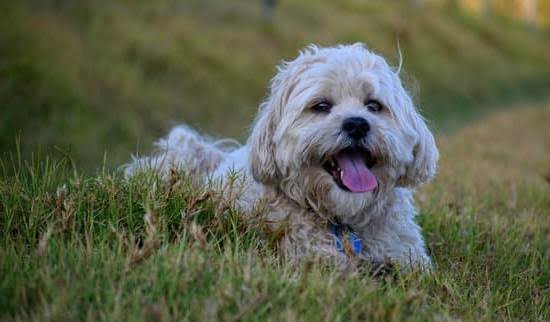Are you tired of cleaning up after your dog’s mess? Many dog owners are opting to train their furry friends to use the human toilet, making clean-up a breeze. In this article, we will explore how to train a dog to use the human toilet and the benefits that come with it.
Toilet training your dog can be a game-changer for both you and your pet. Not only does it eliminate the need for messy clean-ups, but it also provides convenience and independence for your canine companion. Imagine never having to worry about scheduling potty breaks or dealing with accidents indoors ever again.
In the following sections, we will provide a step-by-step guide for dog owners on the process of toilet training, explore different methods and tools available, address common challenges, and offer tips for maintaining success. With patience and consistency, you can successfully teach your dog to use the human toilet. Let’s dive into this revolutionary method of potty training and discover how it can benefit both you and your furry friend.
The Process of Toilet Training
Toilet training your dog to use the human toilet can seem like a daunting task, but with the right approach and consistency, it is definitely achievable. Here is a step-by-step guide for dog owners on how to train their dogs to use the human toilet:
1. Start with basic obedience training: Before you can begin toilet training your dog, it’s important to establish a foundation of basic obedience. This includes commands such as sit, stay, and come. Obedience training will create a strong communication bond between you and your dog, making the toilet training process much smoother.
2. Introduce the concept of the human toilet: Once your dog has mastered basic obedience commands, you can start introducing them to the idea of using the human toilet. This can be done by placing a special platform or seat attachment on top of your toilet bowl that is designed specifically for dogs. Encourage your dog to sniff around and get comfortable with this new setup.
3. Gradually transition from traditional methods: If your dog is used to using pee pads or going outside for bathroom breaks, you will need to gradually transition them to using the human toilet. Start by encouraging them to use the platform or seat attachment whenever they need to go, and praise them for their efforts. Over time, reduce access to traditional methods until they are solely reliant on the human toilet.
By following these steps and being patient with your dog’s learning curve, you can successfully train them to use the human toilet. Remember that every dog is unique, so it’s important to tailor your approach based on their individual needs and behaviors.
Choosing the Right Toilet Training Method for Your Dog
One of the crucial decisions in toilet training your dog is choosing the right method for your furry friend. Each method has its own set of pros and cons, and it’s important to consider your dog’s personality, breed, and lifestyle before making a decision.
One popular method is using a pet litter box specifically designed for dogs. This method can be convenient for both you and your dog, especially if you live in an apartment or have limited outdoor space. However, some dogs may not easily transition from using the litter box to using the human toilet, so keep this in mind when considering this approach.
Another method that many dog owners choose is teaching their dogs to use special training pads. These pads are great for indoor use, especially during the early stages of toilet training. However, some dogs might become reliant on the pads and struggle to make the switch to using the human toilet later on.
For those who prefer a more direct approach, teaching your dog to use the actual human toilet can be a feasible option. This method requires patience and consistency but can be incredibly rewarding once your dog successfully makes the transition. It also eliminates the need for additional cleanup and maintenance associated with other methods.
By carefully weighing the pros and cons of each toilet training method, you can determine which approach will best suit your dog’s needs and abilities. Regardless of which method you choose, remember that positive reinforcement, patience, and consistency are key elements in successfully training your dog to use the human toilet.
Crate Training
First, it is important to choose the right size crate for your dog. The crate should be large enough for the dog to stand up, turn around, and lie down comfortably, but not so large that they have enough space to use one corner as a bathroom area. This will encourage them to hold their bladder and bowels until they are taken outside.
When incorporating the crate into the toilet training process, it is essential to establish a consistent routine. Take your dog outside to eliminate first thing in the morning, after meals, before bedtime, and any time they come out of the crate.
Gradually increase the amount of time your dog spends in the crate between potty breaks, and always praise and reward them when they successfully go outside. With patience and consistency, most dogs can be successfully toilet trained using this method.
| Key Point | Details |
|---|---|
| Choosing Crate Size | The importance of selecting an appropriately sized crate for effective toilet training |
| Establishing Routine | The significance of establishing a consistent schedule for potty breaks and positive reinforcement |
| Patience and Consistency | The necessity of being patient and consistently following through with the training process |
Training Tools and Supplies
When it comes to training your dog to use the human toilet, having the right tools and supplies can make a world of difference. Here are some essential items you’ll need to successfully train your furry friend:
1. Toilet Training Seat: Invest in a toilet training seat specifically designed for dogs. These seats are often adjustable and can be easily attached to your toilet, allowing your dog to comfortably use the toilet just like a human.
2. Treats and Rewards: Positive reinforcement is key when it comes to toilet training your dog. Stock up on your dog’s favorite treats to reward them each time they successfully use the toilet. This will encourage them to continue the behavior.
3. Clicker: Consider using a clicker as part of your training regimen. Clicker training can help reinforce positive behaviors and signal to your dog that they’ve done something right.
4. Cleaning Supplies: Accidents are bound to happen during the toilet training process, so be sure to have plenty of pet-safe cleaning supplies on hand. Enzymatic cleaners are effective at removing any lingering odors that may attract your dog back to the same spot.
5. Patience and Persistence: While not necessarily tangible supplies, patience and persistence are crucial when it comes to successfully training your dog to use the human toilet. Understand that this process may take time, but with perseverance, your efforts will pay off.
By ensuring you have these essential tools and supplies on hand, you’ll be better equipped to undertake the task of teaching your dog how to use the human toilet effectively.
Remember, every dog is unique, so it’s important to find what works best for your individual pet – whether that means utilizing additional training aids or tweaking certain aspects of the process based on their personality and learning style.
Common Challenges and Solutions
Behavioral Issues
One common challenge when training a dog to use the human toilet is dealing with behavioral issues. Some dogs may have difficulties accepting the new toilet routine and may exhibit resistance, anxiety, or fear. This can lead to accidents in the house or a refusal to use the toilet altogether.
To address this challenge, it’s important to be patient and understanding with your dog. Consistent positive reinforcement, praise, and rewards for using the toilet can help alleviate these behavioral issues.
Accidents in the House
Accidents in the house are another common challenge during toilet training. Dogs may not always understand or communicate their need to use the toilet, leading to unexpected messes indoors. One solution to this issue is closely monitoring your dog’s behavior and schedule.
Take note of any signs that indicate your dog needs to go, such as sniffing or circling. When accidents do occur, it’s crucial not to scold or punish your dog as this may exacerbate their anxiety about using the toilet.
Consistency and Patience
Maintaining consistency throughout the training process can also pose a challenge for many dog owners. It’s essential to set a consistent schedule for potty breaks and stick to it as closely as possible. Additionally, being patient is key when troubleshooting toilet training issues.
Rome wasn’t built in a day, and neither is a properly potty-trained pooch. Understanding that setbacks are normal and part of the process will help you stay committed to achieving success with how to train a dog to use the human toilet.
Maintaining Toilet Training Success
Establishing a Routine
To maintain the success of toilet training your dog to use the human toilet, it is crucial to establish a consistent routine. Dogs thrive on routine and predictability, so ensuring that your pet has regular opportunities to use the toilet will help reinforce their training.
Take your dog to the bathroom at the same times each day, such as first thing in the morning, after meals, and before bedtime. By creating a routine, you can help prevent accidents and reinforce the behavior of using the human toilet.
Supervision and Monitoring
Consistent supervision is essential for maintaining your dog’s toilet training success. It is important to keep an eye on your pet, especially during key times such as after eating or when they show signs of needing to go.
By monitoring your dog’s behavior and providing immediate opportunities for them to use the human toilet, you can continue reinforcing their training and prevent setbacks. Additionally, by supervising your dog closely, you can quickly address any accidents and redirect them to the correct bathroom location.
Reinforcing Positive Behavior
Continuing to positively reinforce your dog’s successful use of the human toilet is essential for long-term consistency and sustainability. Offering verbal praise, treats, or a favorite toy each time your dog successfully uses the toilet will maintain their motivation and obedience.
Consistent positive reinforcement helps solidify their understanding of the desired behavior and encourages them to continue using the human toilet. Remember that ongoing reinforcement is necessary even after initial training success to ensure that your dog maintains good habits over time.
Celebrating Success
In conclusion, training a dog to use the human toilet can be a challenging but rewarding experience for both the owner and the pet. By understanding the benefits of this training method, such as convenience and environmental friendliness, dog owners can make an informed decision about whether to pursue toilet training for their canine companion.
Following a step-by-step guide and choosing the right training method is crucial in ensuring success. The incorporation of crate training and the use of appropriate tools and supplies further contribute to a smooth toilet training process. However, it’s important to note that challenges may arise along the way, but with patience and consistency, these issues can be addressed effectively.
Recognizing and celebrating your dog’s achievements in toilet training is essential for reinforcing positive behavior. By using rewards and praise, owners can communicate to their pets that using the human toilet is a desirable and commendable action. Ultimately, by understanding how to train a dog to use the human toilet and following through with dedication, dog owners can achieve successful results and enjoy the many benefits that come with having a well-trained pet.

Welcome to the blog! I am a professional dog trainer and have been working with dogs for many years. In this blog, I will be discussing various topics related to dog training, including tips, tricks, and advice. I hope you find this information helpful and informative. Thanks for reading!





